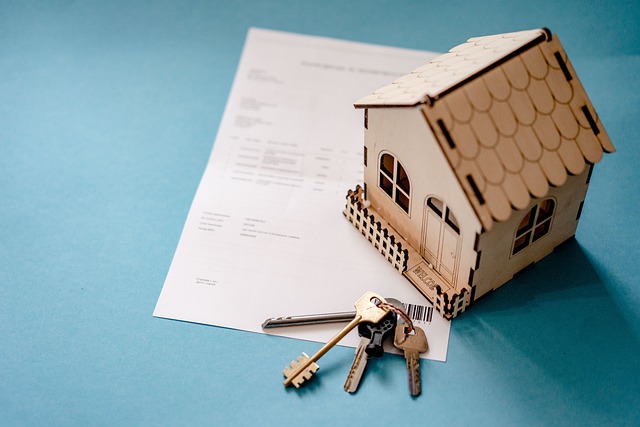The Annual Property Tax (APT) in Singapore is a critical component of the nation's property taxation system, applying to residential, commercial, and industrial properties based on their assessed value. This progressive tax model not only funds public services and infrastructure but also promotes efficient land use by encouraging property owners to optimize asset usage. The APT scale is tiered, with higher rates for more valuable properties, and is overseen by the Nationwide Property Tax Assessment Framework, which considers specific characteristics of each property, including its use and location. This framework ensures a predictable and stable property market, supported by the government's transparent guidelines on APT calculation and payment processes. The APT complements other measures like the Additional Buyer's Stamp Duty (ABSD) and the Total Debt Servicing Ratio (TDSR), all aimed at maintaining the health of Singapore's property market. Homeowners are responsible for updating their property details through IRAS's digital services to ensure accurate tax assessments. APT payments, due before March 1st each year, are mandatory; late payments can incur penalties and interest charges. Property owners should manage their finances with attention to this tax schedule and explore concessions or reliefs offered by the government. For long-term investors, understanding how APT impacts net yields and risk assessments is crucial for making informed investment decisions that align with individual financial goals and the property market's dynamics in Singapore.
Navigating the intricacies of real estate investment within Singapore necessitates a comprehensive understanding of its financial landscape. A pivotal element in this context is the Annual Property Tax (APT), a system designed to contribute to the nation’s public revenue and infrastructure development. This article delves into the nuances of APT in Singapore, guiding homeowners and investors through the assessment process, calculations, and strategic management of liabilities. It also outlines the potential penalties for non-payment or late settlements and highlights the importance of APT within long-term financial planning for real estate investments. Understanding these factors is crucial for maintaining fiscal responsibility and optimizing investment outcomes in Singapore’s dynamic property market.
- Overview of the Annual Property Tax (APT) System in Singapore
- Assessing Your Property for APT: What Homeowners Need to Know
- Calculating APT: Understanding the Factors Involved
- Implications of Non-Payment and Late Payment Penalties
- Strategies for Managing and Minimizing APT Liabilities
- Long-Term Financial Planning and the Role of APT in Real Estate Investment Decisions in Singapore
Overview of the Annual Property Tax (APT) System in Singapore

In Singapore, the Annual Property Tax (APT) system is a key component of property taxation, under which residential, commercial, and industrial properties are taxed annually based on their value. This progressive tax structure encourages efficient and sustainable land use while ensuring that property owners contribute to the public revenue that funds essential services and infrastructure. The APT in Singapore is levied on a tiered scale where rates increase with the assessed value of the property, incentivizing property owners to improve their properties or use them efficiently. The Nationwide Property Tax Assessment Framework administers this tax, which considers factors such as the type of property, its use, and its location within the city-state to determine the applicable rate. This system is designed to promote a stable and predictable property market, with the government providing clear guidelines on the calculation and payment of APT, thus facilitating informed decision-making by property owners in Singapore. It’s also noteworthy that the APT is integrated with other policies like the Additional Buyer’s Stamp Duty (ABSD) and the Total Debt Servicing Ratio (TDSR), which together work towards maintaining a healthy and sustainable property market within the country.
Assessing Your Property for APT: What Homeowners Need to Know

In Singapore, understanding the nuances of the Annual Property Tax (APT) is crucial for homeowners to manage their financial obligations effectively. The Inland Revenue Authority of Singapore (IRAS) assesses properties for APT annually, using a tiered rate structure based on the property’s value and use. Homeowners must be aware that properties are re-assessed every few years to reflect market values, which can lead to changes in their taxable income. It is imperative to keep abreast of these assessments as they can significantly impact your finances. To ensure accuracy in the assessment process, homeowners should review the property’s details as per the information provided by IRAS. This includes verifying the valuation of the property, confirming its use (residential, commercial, or industrial), and checking for any applicable reliefs or exemptions. Engaging with IRAS through their digital services is an efficient way to keep your property particulars up-to-date, which in turn helps in receiving a correct APT bill. Homeowners should also be aware of the deadline for payment and the penalties for late payments to avoid any unnecessary additional charges. Understanding the specifics of how your property is assessed for APT in Singapore underpins effective financial planning and ensures compliance with tax regulations.
Calculating APT: Understanding the Factors Involved

In Singapore, the Annual Property Tax (APT) is a yearly levy imposed on property owners as outlined by the Inland Revenue Authority of Singapore (IRAS). Calculating APT involves several factors that contribute to the amount one must pay. One of the primary determinants of APT is the valuation of the property, which is assessed based on its annual value. This value is determined by the IRAS and can be influenced by various factors such as the property’s location, size, type, and condition. The taxable income of the owner and any statutory modifications or charges also play a role in this calculation. Additionally, the tax rate applied to the nett annual value (NAV) varies depending on the type of property—residential, commercial, industrial, or vacation/vacant land—with different rates for each category. Understanding these factors is crucial for Singaporean property owners to accurately calculate their Annual Property Tax and budget accordingly. It’s important for taxpayers to stay informed about any changes in valuation methodologies or tax rates as these can affect the APT amount due, ensuring compliance with Singapore’s fiscal regulations regarding property ownership.
Implications of Non-Payment and Late Payment Penalties

Residents and property owners in Singapore are subject to the Annual Property Tax, a statutory duty that contributes to the nation’s public revenue. Non-payment or late payment of this tax can lead to significant repercussions. If an individual fails to settle their Annual Property Tax dues on time, they may incur penalties and interest charges. The Inland Revenue Authority of Singapore (IRAS) mandates that taxes be paid by a specific date each year, typically before the first of March. Late payment penalties are calculated as 5% of any unpaid tax for every month or part of a month after the due date that the payment remains outstanding, capped at a maximum of 20%. This penalty is in addition to the interest charged on the late payment, which accrues at a rate of 5% per annum. It is imperative for property owners to manage their financial obligations responsibly and comply with the payment schedule to avoid such penalties and to maintain a clear tax record, as non-payment or delayed settlement can also lead to legal action, ultimately affecting one’s creditworthiness and potentially impacting future financial dealings. Understanding the implications of non-payment and the late payment penalties associated with the Annual Property Tax in Singapore is crucial for property owners to manage their finances effectively and adhere to tax regulations.
Strategies for Managing and Minimizing APT Liabilities

In Singapore, the Annual Property Tax (APT) is a key consideration for property owners as it represents a significant part of their annual financial obligations. To effectively manage and minimize APT liabilities, property owners should adopt strategic approaches that align with the tax assessment framework set forth by the Inland Revenue Authority of Singapore (IRAS). One approach involves optimizing property usage to qualify for available property tax concessions or reliefs, such as the Occupier Concession Scheme for owner-occupiers. It is imperative to stay abreast of the latest tax regulations and updates from IRAS, as these can offer opportunities to reduce taxable income. Additionally, property owners should consider the property’s valuation band accurately, as this determines the base amount of APT payable. Regularly reviewing the property’s valuation band with the guidance of professional valuers can ensure that it is aligned with current market values, potentially reducing the APT liability.
Furthermore, diversifying investment properties across different valuation bands can provide a more balanced tax profile. This diversification strategy can be complemented by leveraging tax-saving instruments such as the Not Ordinarily Resident (NOR) status, which grants certain exemptions to individuals who do not meet the criteria of ordinary residence. Property owners with multiple properties may also benefit from the apportionment method, where APT is allocated proportionally based on usage and occupancy. By implementing these strategies, property owners in Singapore can effectively manage and minimize their Annual Property Tax liabilities, ensuring financial prudence within the property tax framework established by the IRAS. It is advisable to consult with a tax professional to tailor these strategies to individual circumstances and ensure compliance with all regulatory requirements.
Long-Term Financial Planning and the Role of APT in Real Estate Investment Decisions in Singapore

When engaging in long-term financial planning, particularly within the real estate sector in Singapore, understanding the implications of Annual Property Tax (APT) is paramount. The APT in Singapore, which replaced the former Annual Value system in 2019, is a tax imposed on property owners based on the value of their property. This transition to a market-value-based tax system has introduced new dynamics for investors and homeowners to consider. Prospective real estate investors should factor in the APT as part of their investment analysis, as it represents a significant component of property ownership costs over time. The APT rates are progressive, meaning higher value properties bear a higher tax rate, which can impact cash flow and profitability. For long-term financial planning, it is essential to project these annual taxes to ensure that the income generated from the property can sustain such expenses, especially in a market where property values and taxes may fluctuate.
In the context of real estate investment decisions, the APT plays a crucial role. It influences the net yield and risk assessment of an investment property. Investors must weigh the potential appreciation of the property against the steady outflow of APT payments. The tax’s progressivity also means that high-value properties might attract substantially higher taxes over time, which could affect the capital growth expectations and overall return on investment. Consequently, investors should conduct thorough analyses to ascertain how the APT will impact their long-term financial objectives. By incorporating APT projections into their models, investors can make more informed decisions that align with their investment horizons and risk profiles, ultimately contributing to a well-rounded real estate investment strategy in Singapore’s dynamic market.



